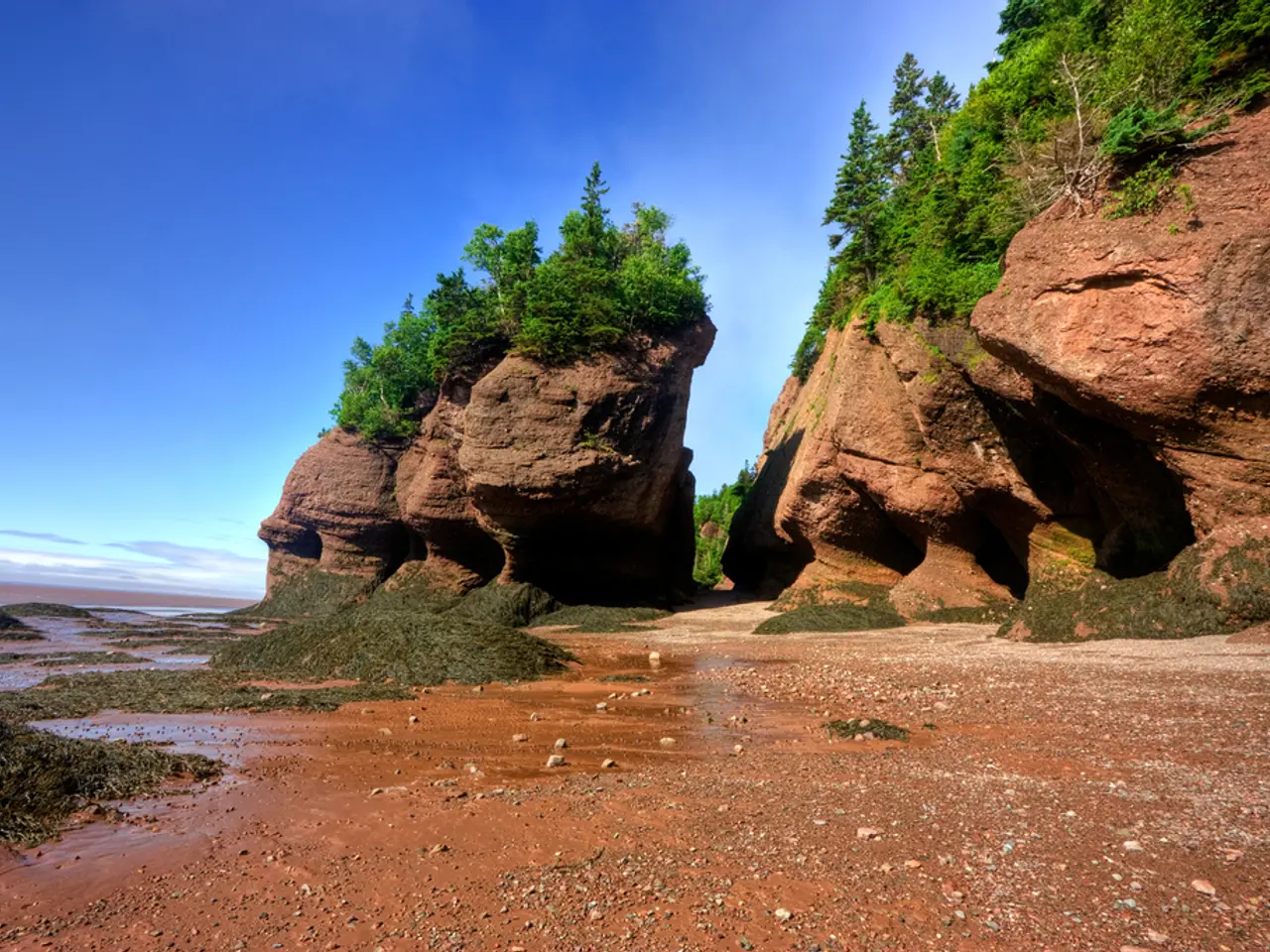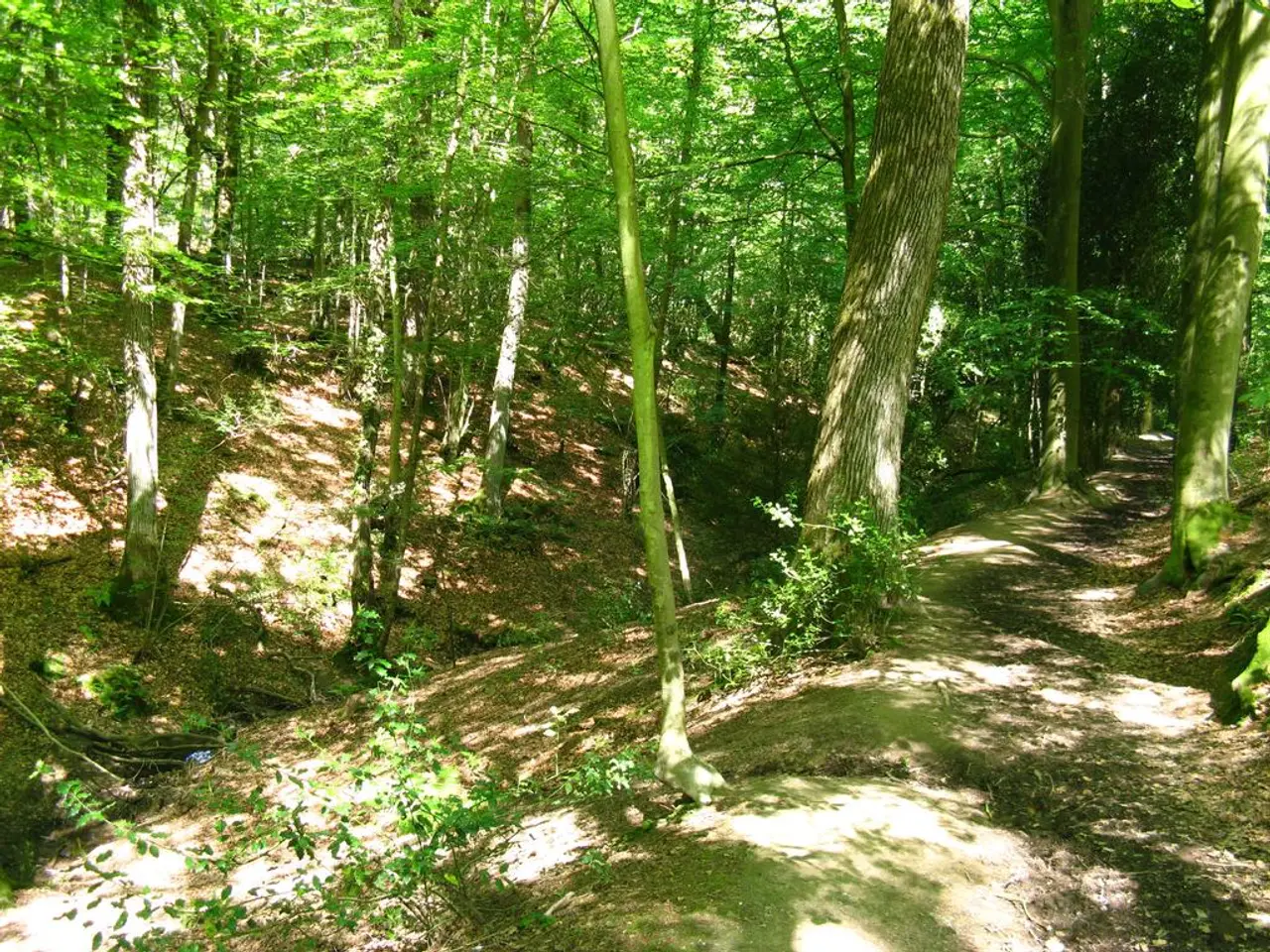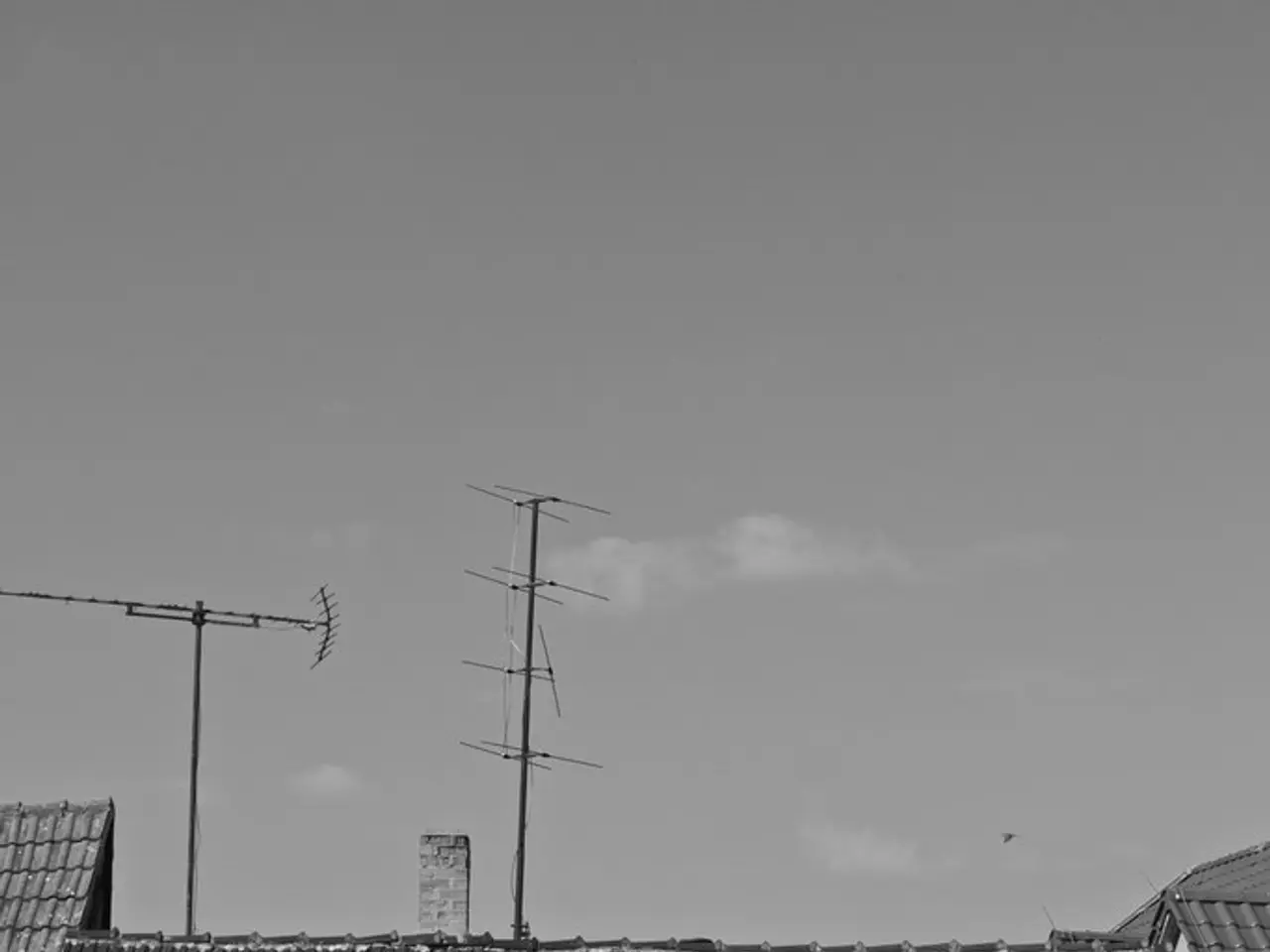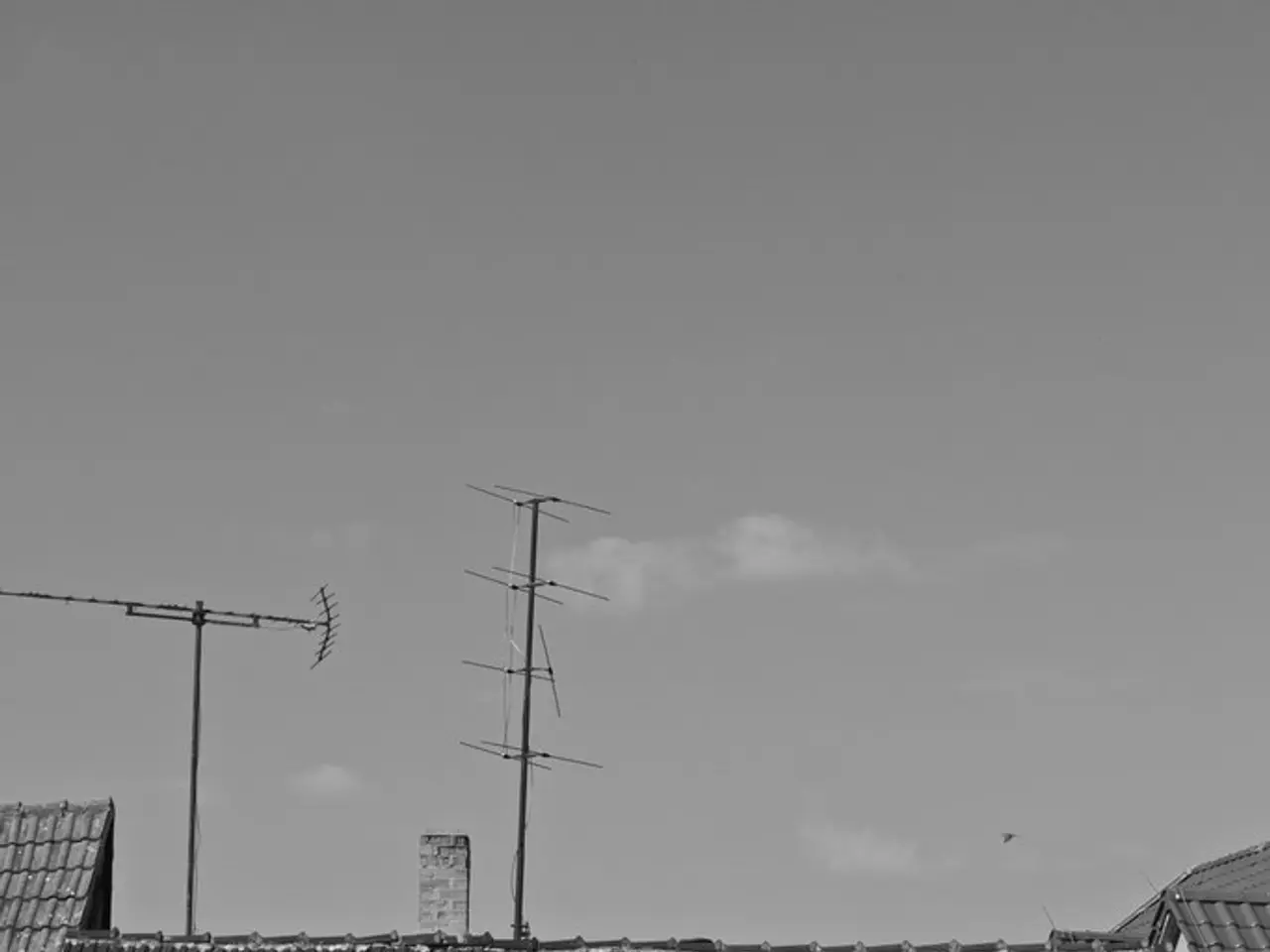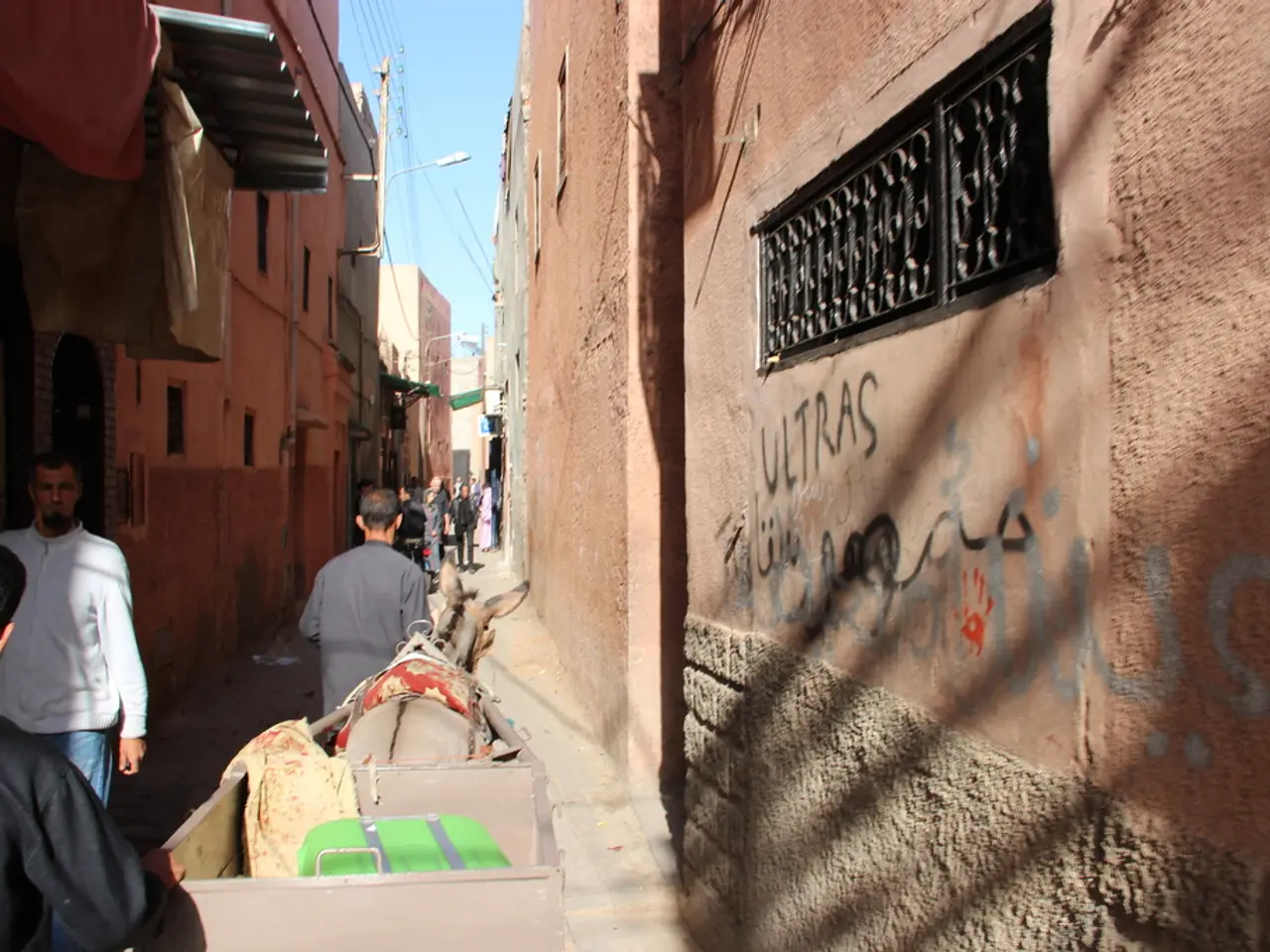Visitors in Tуапси district construct a makeshift raft from fallen logs following a storm
=====================================================================================
In the resort villages of the Black Sea, a storm has caused significant changes to the sea's appearance, making swimming a potentially dangerous activity.
A major fuel oil spill occurred in December near the Krasnodar region after a storm wrecked Russian tankers, releasing large amounts of heavy fuel oil into the Black Sea. This oil and its residues have spread and persisted in coastal waters and on beaches, sometimes washing ashore and staining the coastline black.
The storm that occurred in the Tuapse region has stirred up this underwater pollution, increasing hazardous conditions like strong currents or debris in the water. Swimming in 2-meter waves can be particularly dangerous due to these factors.
Tourists in Djubga have built a raft using logs and a branch to navigate the rough waters, but they are not rushing into the water. Instead, they are walking along the beach. The raft built by tourists is still being used.
The press service of the EMERCOM of Russia for the Krasnodar region issued an advisory, advising people to avoid open spaces and going into the sea. They also suggested keeping an eye on the elderly and children. The advisory also recommends being very careful on the roads due to the storm.
A video was recorded showing the dirty state of the Black Sea, with debris present in the water. The sea has changed its color to a dirty brown within a few hours. It is safer to stay further from the coast and not leave the populated area.
Local authorities in Tuapse have sometimes prohibited swimming due to contamination and unsafe water quality as a result of the 2024 winter tanker disaster and subsequent storms. The oil residues not only present health risks but also degrade water quality, and storms can remobilize buried contaminants.
Storms can produce rip currents and uneven underwater terrain that pose drowning risks, especially in areas like the Black Sea with complex coastal topography. Therefore, it is crucial to exercise caution and heed the advisories issued by local authorities.
References:
- Stormy Seas and Oil Spills: The Dangers of Swimming in the Black Sea
- Oil Spill in the Black Sea: A Persistent Threat to Swimming Safety
- Swimming in the Black Sea: A Health Risk After the Oil Spill
- The unusual color change in the Black Sea, caused by the oil spill and subsequent storms, raises concerns about the safety of swimming, making environmental science and weather forecasting crucial for informing people about potential hazards.
- The oil spill and the stirred-up pollutants in the Black Sea, along with the change in weather conditions, emphasize the need for learning more about climate-change effects on water bodies and the potential impacts on local environments and public health.
- In light of the recent oil spill, the frequent storms, and the persistent pollution in the Black Sea, it is essential to prioritize research in the field of environmental science, climate-change studies, and weather-forecasting to ensure the safety of swimmers and the protection of the marine ecosystem.

